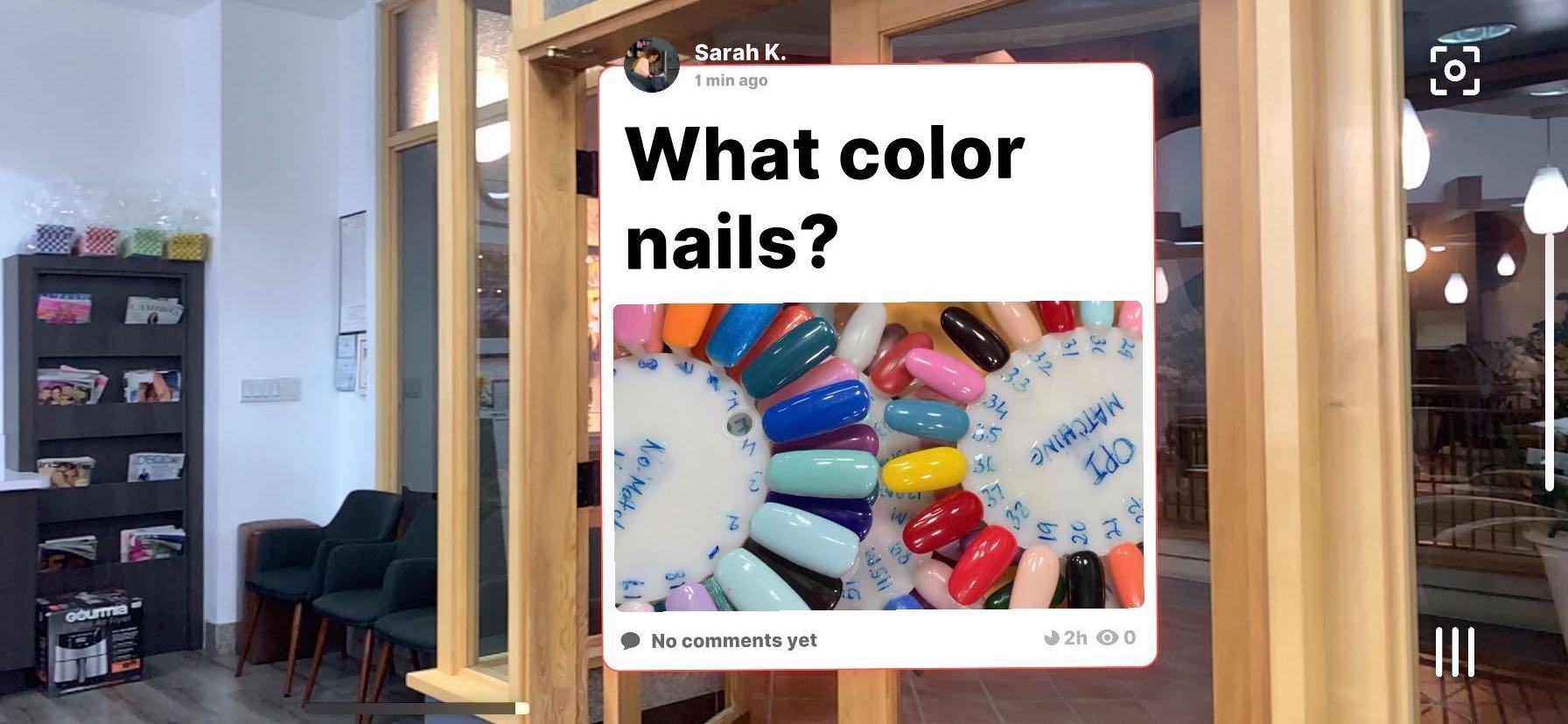
![]() “Vantage” is AR Insider’s editorial contributor program. It enlists spatial computing executives and innovators for first-hand strategic insights. Find out more or contact us to participate here. Authors’ opinions are their own.
“Vantage” is AR Insider’s editorial contributor program. It enlists spatial computing executives and innovators for first-hand strategic insights. Find out more or contact us to participate here. Authors’ opinions are their own.
A New Take on the Future of Augmented Reality
by Saul Garlick
As an emerging technology advocate, I believe that smart tech — particularly augmented reality — can be a powerful tool to bring people together.
So far, the way that brands leverage AR has been limited. AR isn’t just a cool visual feature on an app; it’s an interactive experience that brands and marketers can customize to push beyond traditional communication and engage their customers in real-time.
Right now, there are plenty of AR-enabled sources, but we have yet to see marketers take full advantage of this technology to create community… or what we at Fabric describe as a new social fabric.
Traditional Augmented Reality vs. Social Augmented Reality
Traditional AR technology overlays virtual objects in real-world scenarios in real-time – enabling users to experience interactive, digital content through their mobile devices.
But businesses can be more effective if they bring AR experiences to their customers wherever they are. We’ve learned that one way to do this is using GPS-enabled AR technology that creates the effect of walking billboards that move with the user. The goal is real-time interaction with customers and authentic connections that lead to in-person conversations.
By breaking down physical barriers and sharing ephemeral public messages, social AR can give brands and users the ability to discover and interact. The opportunity is to deliver messages directly to consumers in AR based on factors such as location, what they’re watching, or their social graphs. This can spark conversations between consumers while sharing updates and offers from the brand itself.

The Future is Augmented
AR has already made significant changes to how we communicate, create and stay connected through social media. It offers communities a better experience with social connection and increased engagement.
Brands would be wise to take advantage of this growing consumer demand for new digital experiences and methods of engagement. AR can strengthen business-to-consumer (B2C) relationships by making brands accessible, creating a bridge of open communication, and enabling users to become a part of their story.
To envision such interactions, imagine sitting on a couch watching a basketball game. You quickly pull out your phone to see a customized game experience in your own home. Viewers can share and discover real-time posts, including photos or videos in AR. They can have authentic discussions with other game viewers nearby, creating unique interaction and second-screen viewing experiences. Brands can also provide real-time targeted promotions such as a local bodega offering a 50 percent off during halftime, or for the next gameday order.
With widely popular examples like Pokémon Go and Snapchat filters, consumers have already begun to accept that AR is gradually becoming indispensable and expected. But it’s time to reimagine AR by elevating to social AR, which happens at eye level.
Adapting to Change
The most challenging part of the global acceptance of AR is that it requires a lot of habit building. The concept can be confusing and intimidating to some. Times change, trends are rapidly evolving, and situations such as COVID-19 can change the direction of how we go beyond system recognition. As more brands embed social AR for community building within their current apps, it will become ubiquitous.

Learning Through Experience
Like most businesses, we had to make changes quickly during COVID-19. We shifted our attention from B2C user acquisition to helping other businesses support their existing communities. We initially intended to go to the market on college campuses and target people near one another. With colleges increasingly going online, and in-person events going virtual, we adjusted our product roadmap to allow users to see both local and global content.
The lesson here is adaptability. Just as Fabric adapted to the unexpected shifts and changes that came with COVID-19, I encourage other businesses, marketers and brands to do the same and dare to try something new. Now is the time to embrace social AR to nurture and grow customer relationships.
Consumers are more open than ever to adopting new ways of staying safe while being connected. Now and throughout the post-Covid world, people will be prompted to seek out brands and businesses offering virtual experiences that make them feel united.
The Takeaway
Now is the time for brand marketers to leverage emerging tech to support their communities. Consumers are more open than ever to adopting new ways to stay safe while staying connected. Now, and in the post-Covid world, customers will be prompted to seek out brands and businesses that offer virtual experiences and meaningful connections.
In this new world, as consumers are seeking brands they trust, you want to reach them where they are. I encourage others to turn to emerging tools like Social AR to stay connected, even while socially distant.
 Saul Garlick is co-founder and co-CEO of Fabric.
Saul Garlick is co-founder and co-CEO of Fabric.





